August 10, 2020
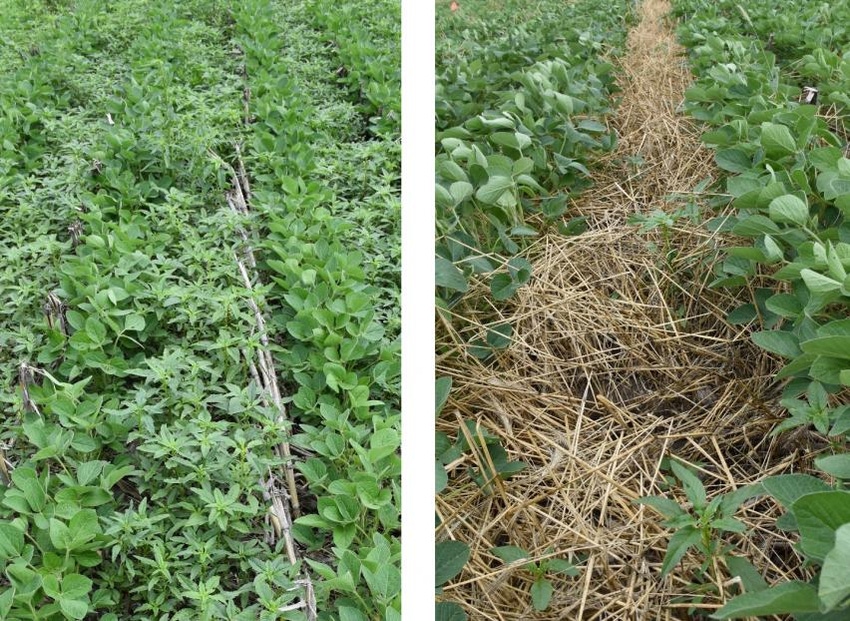
Waterhemp control is an increasing challenge for soybean producers, due to the evolution of multiple herbicide-resistant populations. With dwindling herbicide resources, there is a need to integrate non-chemical strategies into current weed-management programs in soybean. Cereal rye is the most common cover crop grown in the Midwest due to its winter hardiness and short life cycle. The high C:N ratio of cereal rye compared to legume or brassica cover crops results in a slow degradation of the residues; thereby, increasing the duration of weed suppression. This along with a greater biomass accumulation makes cereal rye an ideal cover crop candidate. Another non-chemical, cultural strategy to suppress weeds and complement herbicide efficacy is the use of narrow-row vs. wide-row soybean. Growers need research-based information on how to best integrate these two strategies for managing herbicide-resistant waterhemp in soybean.
A field study was conducted (2019-2020) at the ISU Research and Demonstration Farm near Ames, Iowa, to quantify the impact of cereal rye cover crop and soybean row spacing (15 inch vs. 30 inch) on the glyphosate-resistant waterhemp seed bank. The previous crop was corn, with three levels of waterhemp control achieved by:
A marginal herbicide program (two herbicide sites of action); 27 fl oz/acre Dual II Magnum PRE followed by 32 fl oz/acre Roundup PowerMAX POST.
An aggressive herbicide program (three herbicide sites of action); 2 fl oz/acre Sharpen + 2.5 fl oz/acre Zidua SC PRE fb 32 fl oz/acre Liberty SL + 23 fl oz/acre Dual II Magnum POST.
An aggressive integrated program (three herbicide sites of action) plus harvest weed seed control at corn harvest (no weed seed input).
The three programs resulted in three different levels of weed seed production.
After corn harvest, cereal rye was drill seeded (60 lb/acre) in the 2nd week of October 2019. Soybean (Enlist E3 beans) was planted into the standing rye cover crop at a 30- or 15-inch row spacing on May 22, 2020. On the same day, cereal rye (at anthesis stage) was terminated with 32 fl oz/acre Roundup PowerMAX, and 27 fl oz/acre Dual II Magnum was applied to provide early-season residual control of waterhemp. Cereal rye biomass at the time of termination averaged 4600 lb/acre. To examine the potential of cover crop and narrow row soybean on waterhemp control, no POST herbicide was applied in the soybean phase of the study.
The aggressiveness of the prior year’s corn herbicide program had a strong impact on waterhemp infestation in the soybean crop. Waterhemp emergence in soybean was reduced by 75% with the aggressive two-pass herbicide program (three sites of action) plus harvest weed seed control compared with the marginal herbicide program in the previous year (Figure 1).
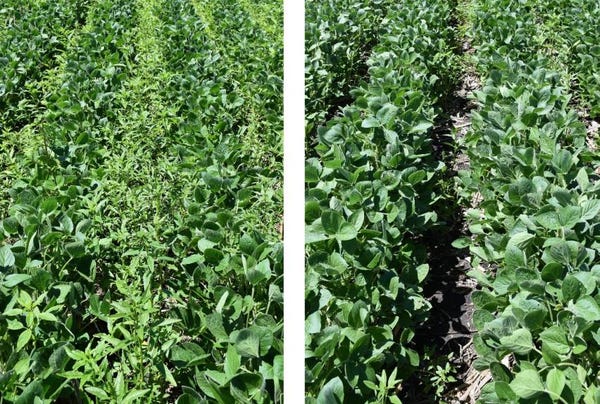
The rye cover crop reduced waterhemp emergence (density) by 30% and waterhemp growth (size and biomass) by up to 75% through July (Figure 2).
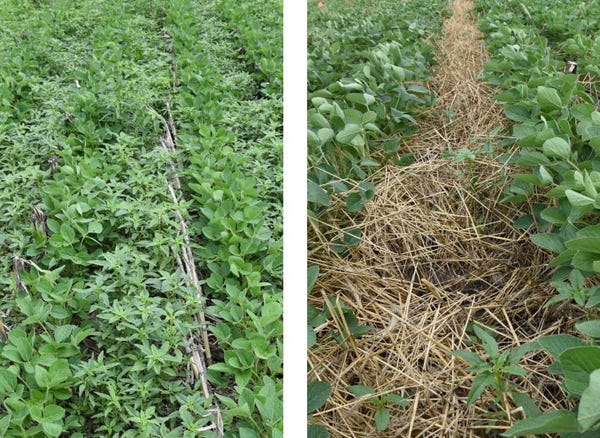
Reducing the soybean row spacing from 30 to 15 inches reduced waterhemp emergence by 15% and waterhemp growth by 50%. (Figure 3).
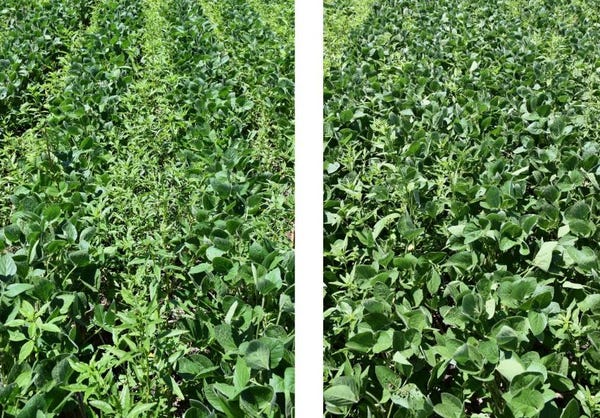
The integration of these tactics (Figure 4) resulted in a significant suppression of waterhemp even with limited herbicide inputs in the soybean phase of the rotation. For instance, an aggressive weed control program in corn followed by a rye cover crop and narrow-row soybean showed 87% less waterhemp emergence, compared with the treatment that had marginal weed control in corn, no cover crop and 30-inch soybean row spacing. Soybean yield will be recorded at harvest in the fall 2020 to determine the effects of cover crop, row spacing, and weed competition.
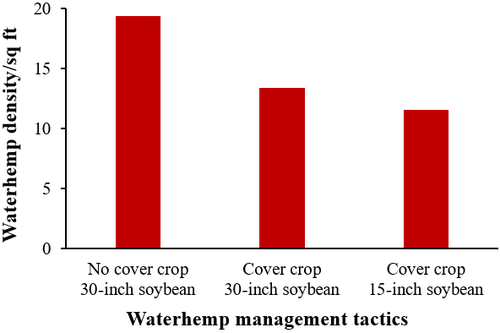
The ISU Weed Science program is also researching cover crop termination timing by herbicide interactions to develop integrated weed management tactics and methods to integrate harvest weed seed control technologies to manage herbicide-resistant waterhemp in Iowa soybean production.water
Disclaimer: This article is for education purpose only. Mention of a specific product should not be considered as approval, nor should failure to mention a product be considered disapproval. Read the product label before using any herbicide.
Originally published by Iowa State University.
The source is solely responsible for the information provided and is wholly owned by the source. Informa Business Media and all its subsidiaries are not responsible for any of the content contained in this information asset.
You May Also Like




